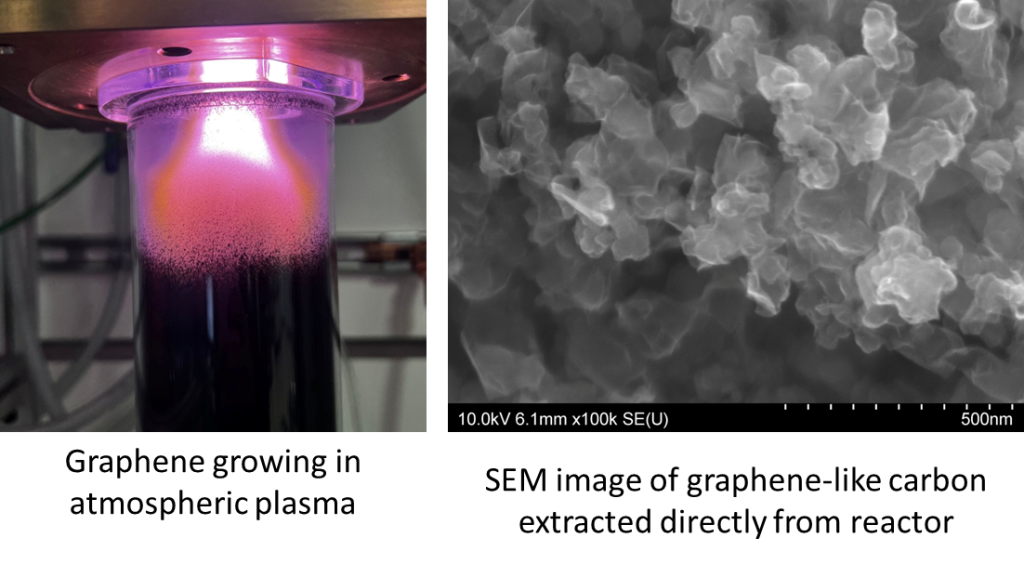Graphene Growth in Atmospheric Plasma
March 27, 2024Graphene is a 2D carbon structure with many useful properties including strength, conductivity, flexibility, and more. At IPI, graphene is grown in atmospheric pressure plasmas, breaking down methane (CH4), allowing the carbon radicals to recombine in a graphene-like structure.
Graphene is utilized in various applications, including battery technology and composite materials. Typical lithium-ion batteries can be altered to include graphene, which can improve battery life, increase the number of recharge cycles, improve conductivity, and even decrease the weight of the batteries. Because of the difficulty of growing graphene, understanding the growth mechanisms is vital to improving the conditions of the reactors, allowing for greater production rates and more graphene-like material, as opposed to amorphous carbon or carbon black. With an increase in graphene production and quality comes more efficient technologies, stronger materials, and increased battery life.
